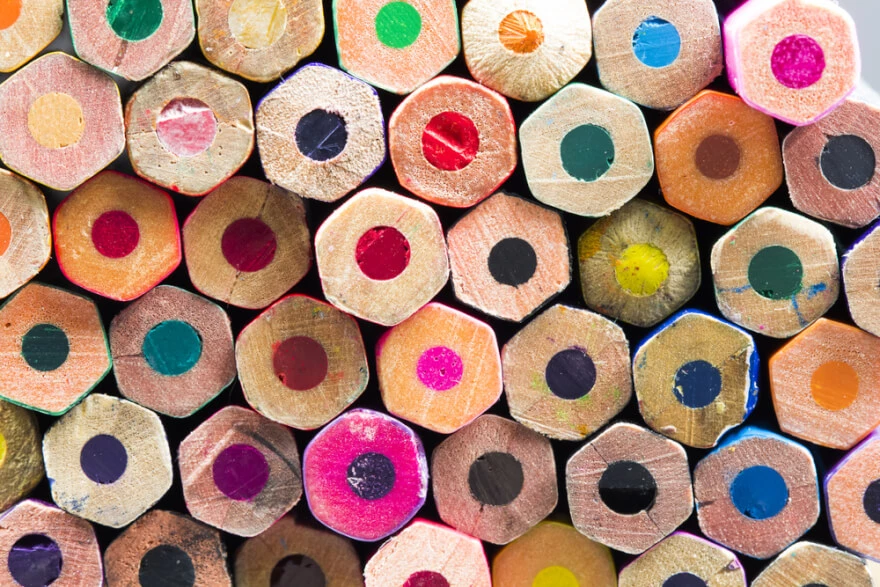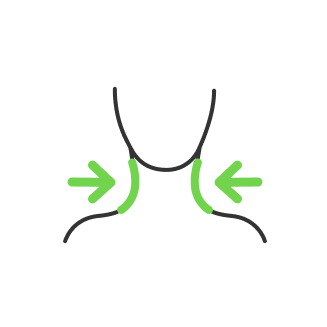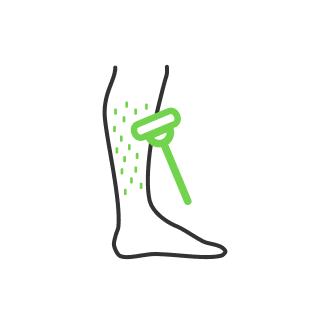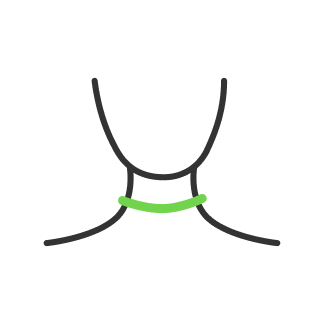Texture in Photography

- What is Texture in Photography ?
- Texture photography ideas
- Capture bricks/walls
- Include trees/leaves into the frame
- Paint and create
- Make Photograph Rocky beach
- Capture the wood life
- Demonstrate variety of cloth designs
- Try different nods with a simple rope
- Enjoy the metal effect
- Get close to make unique portraits
- Be free to create personal textures
- Define necessary equipment
- Choose from natural light or external sources
- Experiment with angles and mix
- Use double exposures
When taking pictures, we constantly strive to capture the world we see around. Imprinting photo textures offers us another problem that needs to be solved, as careful as possible. It is necessary to convey to the viewer not only what is the silhouette of those objects, but also what it feels like, if you touch it. A high-quality snapshot of a specific pattern can make a huge impression and permanently capture the viewer's attention. In fact, this is the aim of every artist. Only in such a way we can direct attention to items and details we want to show.
What is Texture in Photography ?

Looking for the precise definition, let us imagine that we are watching a film with a rainy scene. We see and hear the rain on the screen, but we do not get wet or smell its humidity. The same for photography, as a significant artistic tool, it can demonstrate various objects and surfaces, but sometimes they do not seem that real. Those physical sensations of roughness, smoothness, together with softness is the best way to make a flat image three dimensional and alive. Unique essence of life can be captured from a long distance to make an image of a wall drawing and close enough to distinguish every curve of a tender flower.
This is the essential ability of texture in photography, which can be successfully obtained with a skillful use of professional editing software.
To begin with, we will give several classic examples that will help us to look closely not only at objects themselves that surround us, but also of what material they are made of. We are lucky to have great assisting software which helps us to intensify necessary effects after the picture is ready. Just do not neglect all possibilities we have thanks to nature and human creations.
Texture photography ideas
Capture bricks/walls

Bricks are everywhere in cities and villages, from smooth and flat to shapeless and cracked, they seem to create boundaries of our daily life. In addition, bricks often create repetitive patterns and symmetrical shapes. You can take pictures standing far away to capture an overall effect or come closer and try different unexpected, but interesting angles of shooting. Most portraits have more possibilities to succeed if they are made with the help of such a unique wall.
Include trees/leaves into the frame

Nature provides us many different textured options! It is impossible to deny it. The bark of trees can be brilliantly smooth or dry, cracked and rough. Leaves may be speckled, needle-like or fleshy. Walk away with a backpack in the forest, go to the park or just walk along the streets and you will certainly face amazing samples that will look very eye catching on photographs! Take several shots, zoom in and out to see the effect it gives.
Paint and create

Coming back to our task to find special designs, it is impossible not to mention numerous ideas, offered by paint. In everyday life it is difficult not to find various painted surfaces, both indoors and outdoors. Paint serves to protect materials, to enhance its surface with decoration or to separate some parts from another. However, unfortunately, it cannot remain flawless forever, due to weather conditions and time passing by. At the same time, this fragility creates excellent opportunities for photographers looking for unexpected texture in photography! Fresh and radiant paint on the windowsill, an old shabby fence or a multi-layered picture painted with oil paints — all these examples invite cameras to capture magic moments of its existence. Use the instant to get a perfect shot!
Make Photograph Rocky beach

Cold, hard, smooth, chipped — the stone serves as an excellent material for studying patterns in both natural and urban environments. Rocky beach may not be as attractive as a sandy seaside, but the variety of shapes and sizes of stones is impressive and requires every artist to come closer to look at it, examining every curve. Brilliant marble interior of expensive hotels or skillfully carved contour of architectural historic sites reminds us that the stone can also serve as one of the main texturing samples that one can use creating masterpieces.
Capture the wood life

Such an easily recognizable, detailed surface, due to its frequent use in everyday life, wood is another classic idea of a completely photogenic design. Each stage of wood processing, from tree cutting in a forest to finished wooden products, creates new opportunities: twisted roots, roughly chopped wood, chips in a carpenter's yard, smoothly polished boards, visible knots, carefully varnished chairs. These small things can inspire to combine contrasts and to demonstrate handmade work of professional artisans.
Demonstrate variety of cloth designs

Fabrics and various materials, which make up a large part of our daily life, can give a perfect texture photography definition. It can be very soft and tender, but at the same time one of the most difficult to transmit using camera images. Velvet, warm wool, fleecy carpets, rough mats, smooth silk, freshly ironed cotton provide endless possibilities to capture the right moment with appropriate light. Everything you need to do is to pay attention to what you are wearing today and what furniture covers are used.
Try different nods with a simple rope

Probably, this material is not that much familiar to many of us, as previous ones, but nevertheless, it also has an excellent potential. Rustic or smooth and waxed ropes give photographers a wonderful opportunity to get closer and sometimes make unexpected designed backgrounds and foregrounds. And if you ever get to the sea port, then you will find out an exciting feeling of numerous options to capture, using a variety of ropes.
Enjoy the metal effect

Cold and reflective, rusty, oxidized and dull, metal is one of the easiest models to show design and curves, demonstrating its age, providing another excellent texture photography to memorize in your album. Look around your house and find a lot of random metal items that are waiting to be captured from different angles. And then go outside and see how various weather conditions transform this strong material into colorful pieces of natural art.
Get close to make unique portraits

Human skin, like all other materials, also has its own macro pattern. What has to be considered in this regard? We must always try to maintain the natural surface of the model's skin. To do this, you need to remove shine from the face before shooting, do not use a direct and too intense flash, do not overdo it in processing. The maximum close ups are better looking with male portraits, as this can emphasize the harsh nature, dignity and life experience. Female portraits usually request more retouching post-processing work to hide all visible defects, concentrating on advantageous parts. This can be achieved by open aperture or light retouching.
Be free to create personal textures

Photos with unique design are not that difficult to find. Still, if you are too lazy to search for it, then create it yourself! You can try painting with oil and bright colors or find stones of various colors and shapes, experiment with sand and water, etc. Just find something that can create a pattern and experiment again and again until you get a good result. Do not forget about the importance of depth. Shadows convey the depth and dimensions of materials, so make sure your shadow is present with the right source of light, where it is natural or artificial. Without it, your shot will look like something drawn on paper. At the same time, avoid too strong shadows and overexposed areas, as this can ruin the overall effect and destroy the idea.
Define necessary equipment

There is no better occasion to use a tripod, if not while shooting a beautiful pattern. If you are not shooting at an angle, then you will need everything to be in focus. To make a sharp photograph, you will need to set a high aperture, such as f/8 and higher. It means long shutter speed, and camera shake is the last thing you need at this moment. In very rare cases, this can be a great effect, but in most images, such designs should be captured as sharply as possible. Just trust experienced people and use a tripod. In almost all cases, a built-in flash is not desirable. Since it has a direct effect, flat light will have a negative effect on shadows, which is not appropriate for this type of photos. You may need a remote shutter release. If you do not have it, then check whether the camera has a mirror-up mode or a timer. Everything that will allow you to avoid camera shake is a good idea. If you do not have a tripod and you can only shoot with your hands, then it is strongly recommended to read more articles on how to take sharp pictures. As for the lens, then everything really depends on what you are shooting. If the pattern is small-sized, then you need a macro lens to transfer all details. If you are photographing a wall, a simple wide-angle lens will do the work without any discomfort. Just remember that wide corners can be distorted, which will be a problem when shooting straight lines.
Choose from natural light or external sources

If you are outdoors, sunlight is the best source of light for textures. Picture, made during the hours of dawn and sunset, when the sun illuminates your object at a most successful angle, is always the best choice. Bright sunny days are most suitable, as clouds can create a soft, diffused light that will eliminate or soften all shadows, which will lead to a loss of depth and dimensionality. For shooting indoors, external light is required if you do not have another light source that can illuminate the item (for example, a large window). By creating an angle you can simulate sunlight. You can also experiment with colors to create your own idea and plot of the frame. Basically, one lamp is sufficient, but there are times when you want to create multiple shadows, for this you need several sources, sometimes even multicolored.
Experiment with angles and mix

A direct pattern image can make the depth of field very small. Try various options, take a picture at an angle and see what happens. Experiment with depth of field simply by increasing the aperture.
Designs of the same color and texture can be boring. Try to mix them with other colors, adding them by yourself, and highlighting the borders of one and another. This connection can look amazingly beautiful and add an interesting effect to your pics. Add contrasts to your everyday perfect photo search. This effect will help you to see invisible combinations which emphasize each other with their diversities. Curves can create their own surfaces, especially created by nature in forests and fields.
Use double exposures

This type of photography is not only a separate picture type, which has to be studied carefully, but also a way to create artistic portraits with various surfaces and human faces. This effect helps to keep the texture, but add a portrait in it, describing the inner feelings of a model with the help of natural items and processes. Do not forget that some pictures can have blurred foreground, which will work as a contrasting frame for your pattern.

If you want to consciously use this or that natural design, first of all, carefully think what you want to emphasize. It is very easy to find the necessary model to capture. They are around us and there is no need to go far. Finding unique, beautiful and attractive surfaces may only seem difficult. As soon as you start looking for it, you will notice it more often, you will come across designs and effects that are even more unique than others. Practice as much as possible to have a trained eye to obtain a sixth sense of what will look better in the frame. Master new techniques and watch professional works online to study their tricks. Most rules are created by experts, who made their first steps like everyone else. Making errors and capturing different frames you will learn how to combine necessary plots and items. Minor errors can be easily corrected by simple retouching applications and photoshop software online.
He started his career as a professional photo designer and retoucher. Professional commercial photographer with 20 years of experience. He is a leading advertising photographer and has worked as a food photographer with Michelin-starred chefs. His work with models can be seen on the calendars of many leading companies in Ukraine. He was the owner of the photo studio and photo school "Happy Duck".

with RetouchMe














